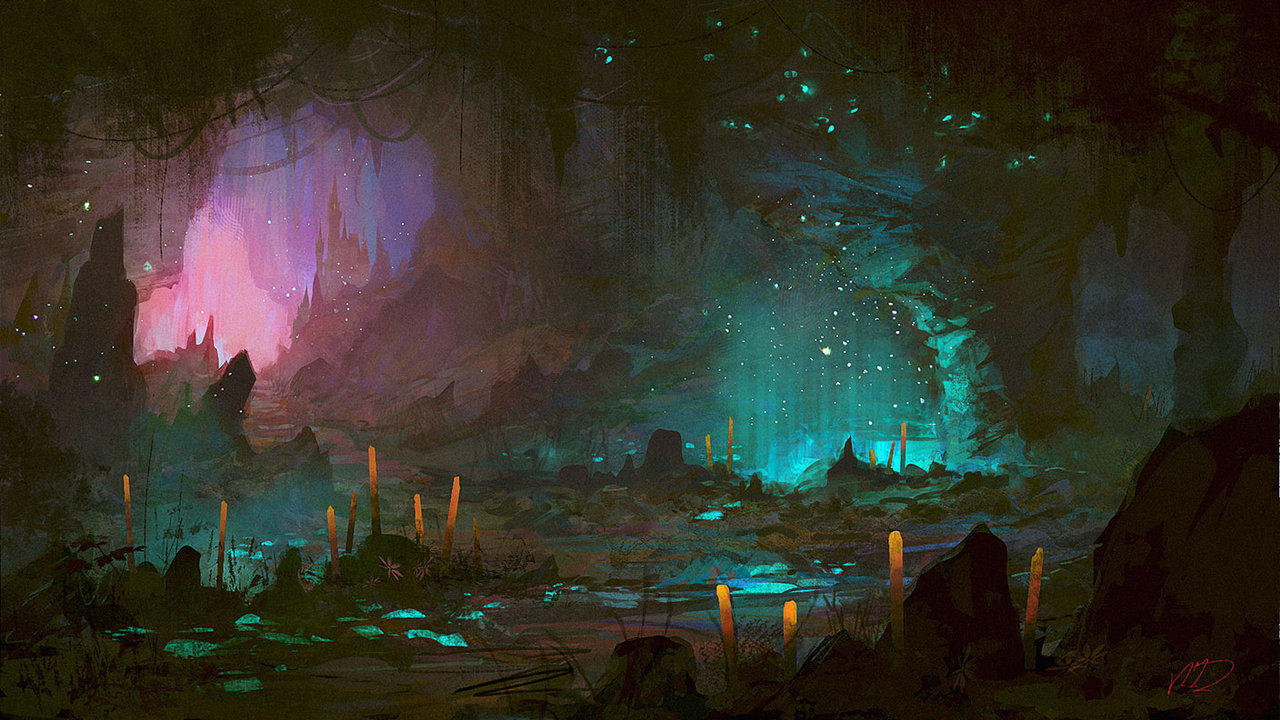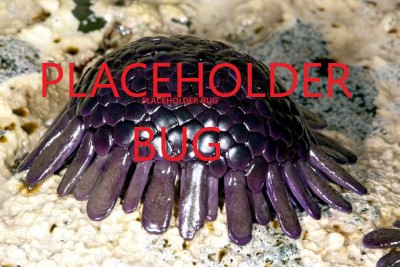These bug really brighten my day! Get it?
— Maiku, Ahi Rancher
Originally found in the Outer Shell, the Ahi have become one of the most widely spread domesticated insect in Araea. Not for food, though they are edible, but for their luminescent properties that help light the dark caves and gloomy city-states.
Description
The Ahi Bugs are small, flying insects that look similar to a wasp. Save for its lower abdomen, it is armored in a metallic-looking carapace with a smooth surface. The exposed abdomen have grown larger throughout their domestication and glows with a soft yellow light through the fleshy wall. They have two multifaceted eyes that cover a substantial part of their head and two long, segmented antennas. Six small arms that end in hooked claws are set along their bodies which they use to cling to rock ceilings or walls. They have no stinger, but are capable of a painful bite.
Through domestication, the Ahi bug found in the Inner Shell's many ranches and farms have little in common with its wild ancestor. They are larger, with a expanded glowing abdomen and a sharper glow. Their eyes are smaller, perhaps because of the increased light and communal hives. As an added bonus, with all the extra flesh on their abdomen, they make for juicier snacks.
The Ahi queen is about twice the size of a regular Ahi bug and have a large, external egg-sac instead of a glowing abdomen.
Behavior
In their natural state, the Ahi bug dine on mushroom, fungi and lichen. They travel and live in groups, content to stay in one area throughout their lives unless driven away by predators or a lack of food. For the most part, they ignore humans as neither predator or food. Some of the groups can reach up to a hundred individual bugs, though the sparse food in the Outer Shell makes such swarms rare. Ahi nests are made from mushroom pulp combined with saliva, adhered to either the walls or the ceiling. The most notable aspect of the Ahi are their glow: they sometimes illuminate entire caverns when swarming. They are hunted by a variety of wasps, snakes and amphibians.
The exact trigger for the bug to start isn't known but ranchers like to say it is whenever the bug is hungry, bored, excited, full, ready to mate or none of the above. Some scholars think the bug is not able to see in the dark very well and use the light from each other to navigate.
Domesticated Ahi live in much larger swarms and have become comfortable around humans. They can easily be enticed to glow and only occasionally bite their handlers. While almost every journeyman rancher is told a horror story of someone who was swarmed by thousands of bugs and bitten horribly, actual cases of this are rare.
Life Cycle
The Ahi bug grow fast and the queen lay numerous eggs in their nests every mating season. While queens live for a year, the worker bugs only have a lifespan of one to two months. Female larvae are about half as common as male and look no different than the other bugs unless the queen dies or they are move to a different nest. There, the female bug become fertile and lose their glowing abdomen in exchange for the ability to lay eggs.
Larvae are kept in the nest and tended to by both workers and the queen, reaching maturity relatively quickly. As soon as they can fly, they join the rest of the swarm in hunting for food. Domesticated hives behave differently, with the food readily available and close by, the Ahi bug tend to stay closer to their nests and mingle.
Light in the Dark
What do you mean, my jokes are terrible? Do you want to buy this lantern or not? Yeah, that's what I thought.
— Maiku, Ahi Rancher
The combination of a docile nature, useful traits and easily satisfied appetites have made the Ahi the most commonly domesticated bugs in the deep. They're used for both food and for lighting, making them vitally important for many places. They're usually fed a slurry of mushrooms that aren't edible for humans, mixed with dead Ahi bugs ground into a paste. Great pens of Ahi are kept at each ranch and sold in lanterns, cages or even nets. Dead Ahi are roasted or boiled, then eaten on skewers or in stews.
The city-states of Araea get much of their light from the Ahi bugs and they have com to occupy a position of great importance in almost every culture.
The Day of Light
The Day of Light is a festival that is celebrated in Kharkorp, though there are variations of it in several different city-states. During the day of light, thousands of Ahi bugs are gathered and then released all over the city in a dazzling display. While very popular, the Day of Light can lead to chaos as the bugs get into food supplies and homes or generally make themselves a nuisance all over the city.




what a cute little bug! The dad joke is great XD
Always!
Creator of Araea, Megacorpolis, and many others.